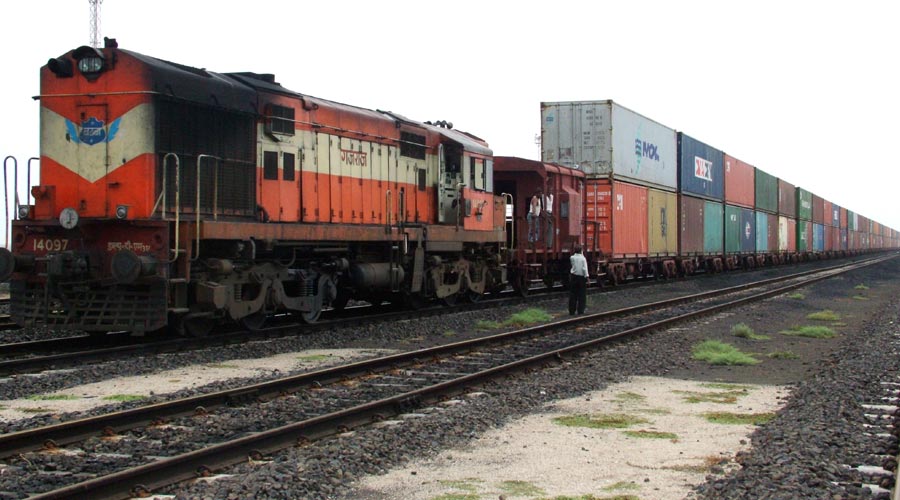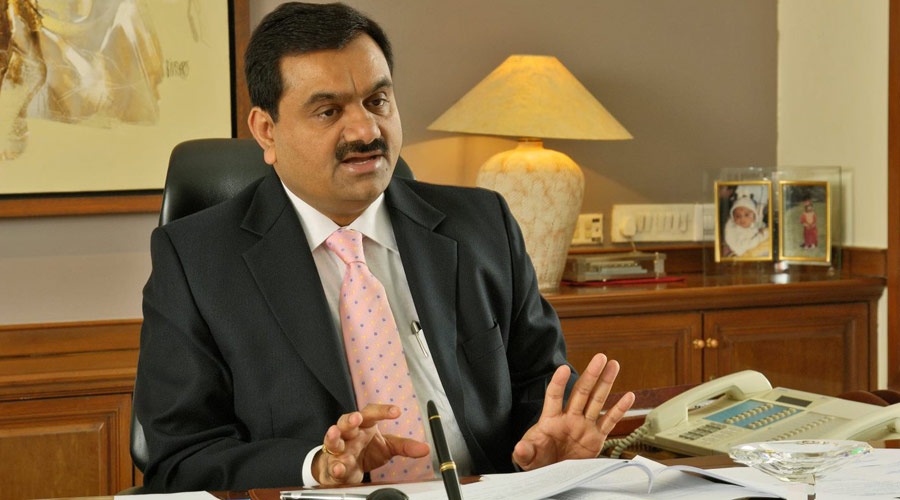Gautam Adani’s gargantuan industrial empire stretches from edible oil, coal mining and imports, thermal power and renewable energy, ports, airports, piped gas and much more. But the giant Mundra Port is the throbbing heart of many of these ventures. He entered into the port business by chance, but once in, he grasped the essentials of the business very rapidly and proceeded to expand it at almost breakneck speed. An extract:
It does not involve the biggest investment. Nor can it be called the most glamourous. But when you consider the unfolding of the
Adani strategy, Mundra Port had a lot to do with it. Gautambhai forayed into many businesses—edible oil (Adani–Wilmar), power plant at Mundra, coal operations, foray into food and agriculture, railway plans, Maruti Suzuki’s export hub at Mundra, defence, steel and many more. All of them can find their roots in or connections with the Mundra Port. It is this port that gave him the confidence of building port terminals on his own and then developing other ports.
Today, he has become one of the most formidable port developers in the world and rubs shoulders with the likes of DPW and PSA (the Singapore port developer). It is among the most efficient ports in India, outranking all the government-owned ports when it comes to container management. But it must climb the rankings a bit more when it comes to other global ports. It is possible that very few of the Adani businesses would have emerged without Mundra Port. This is also true of the strategic oil reserves at Mundra which are connected by a pipeline to the Bhatinda refinery. Mundra Port was crucial to many of these ventures.
In fact, the Food Corporation of India’s (FCI) grain operations at Mundra led it to sign a deal with the Australian Wheat Board (AWB) to build the first few prototype grain storage silos for the government. These were the latest in storage technology. They allowed the first in grain to be the first out through a top-loading facility. They also allowed for adequate airing and even fumigation if required. These could become the prototypes for all grain storage in India in the next few decades. But more on this later.
Similarly, Adani’s foray into power generation—first at Mundra, then elsewhere—made him think of transitioning into green energy—first into solar power, and now into green hydrogen as well. That in turn made him realize the synergies that lie with the Korean POSCO which has an MoU with the Adani Group. Steel production involves the use of and even the generation of hydrogen. Incidentally, POSCO is already helping Saudi Arabia set up one of the largest hydrogen production facilities in the world in collaboration with POSCO Steel of South Korea. The Korean connection (initially in plastics) is revisited, but with a bigger vision, a bigger plan.

Mundra oil storage Penguin Random House
Enter Cargill
By 1990, Gautam was already reckoned as one of the savviest businessmen in Gujarat. His ability to move things in and out of India, as a trader, was by now indisputable. His ability to get the government to listen to him for obtaining requisite clearances for introducing innovative ways of doing business, which would also be in the interest of the state and the country earnings was one such justification, brought him close to people who wanted to get things done.
One such opportunity was brought to Gautam by the global commodities trader, Cargill. In 1990-91, Cargill approached Gautam to source several million tonnes of salt from India. (This was a commodity that is available in abundance in the Kutch-Saurashtra region, which is also why soda ash companies like Tata Chemicals set up their facilities here.) Negotiations began, and a back-of-the-envelope costing was done. The price at which the salt could be made available was arrived at and communicated to Cargill. The next question was whether it could be evacuated from a port or jetty close by. The first thought was the Kandla Port. But then, Cargill, with its access to some NASA maps and advice from some people familiar with water depth and currents, came up with Mundra as the best possible location.
There were several reasons why Cargill liked this location.
It had a good draught (draft or draught of a ship’s hull is the vertical distance between the water line and the bottom of the hull or keel). The greater the draught, the easier would it be for bigger ships to get docked at the jetty or port.
It was not far from the biggest free trade zones (FTZ) in the Middle East.
And it was a location where vessels could come in and get docked throughout the year. The Kandla Port is a bit inside the waterway.
Mundra had always been a small port—even today dhows from different parts of the world come to the old Mundra jetty. The location appealed to Gautambhai as well, as he was familiar with this area. It was like reviving history, making it relevant to modern wealth generators. Both Cargill and Gautam began working on their respective plans and agreed to set up a 50:50 joint venture to build the jetty and establish salt farms. This could involve investments of around Rs 100 crore.
Gautambhai was, at that time, focused only on the jetty and the salt trade. Little did he realize how this would metamorphose in the coming years into something extremely big. It would catapult him into becoming one of the biggest infrastructure players in the country. This jetty was to transform the very landscape of the country. But all this was to unfold over the next decade.

Mundra double decker train Penguin Random House
Land Acquisition
Intuitively, he immediately realized that a good jetty—like a good port—would require lots of land. Moreover, like most Indian businessmen, he was also aware that there was little downside to land acquisition. Like most investors, he knew that any piece of forlorn land becomes valuable when connected to a port, airport, road or railway line. It is an age-old business practice worldwide—not just in India.
Much of the land was marshy land, under brackish water, and some of it was used as salt pans. Nobody wanted these lands, and hence they weren’t worth much. Yet, Gujarat’s bureaucrats sat tight over the papers which would allow transfer of these land to Gautambhai. Finally, according to some versions, Gautambhai actually hired a plane, took the bureaucrat to show him the lands that he wanted to purchase. ‘But these are marshes’ is what the bureaucrat is believed to have said. ‘Exactly,’ explained Gautambhai. ‘Nobody wants these lands. I want to fill up these marshes and create jobs.’ The bureaucrat finally gave his consent to the transfer.
The government made money on this land, and so did the owners/salt workers. Everyone was glad to get a price for them. Hence, today, when critics unfairly accuse Gautambhai of purchasing land at a throwaway price, they forget that this was precisely what it was worth at that time. The land acquisition spree would gain momentum as the concept of the jetty metamorphosed into that of a port.
Gautambhai had learnt—through all his dealings as an exporter and importer—that almost every port makes profits from its lands and not from port operations. The port operations are essential, and, yes, they help recover costs. The real profits come from renting out storage space for the consignments, either before they are put on boats, or afterwards. Known as demurrage in the industry, this is what makes a port profitable. So, the greater the land area available to the port, the more profitable it could become.
In fact, even India’s government-owned port has shown, for several decades, that it is more profitable being a landlord rather than being a port operator. Jawaharlal Nehru Port Trust (JNPT) has leased out its terminals to other players and takes a revenue share (of around 30 per cent) of the business they do. Today, JNPT makes more money from being a landowner and renting out assets, than from the single terminal it operates by itself.
This realization also had an unexpected effect. Aware of the way demurrage works, Gautambhai was hypersensitive to paying demurrage costs anywhere. Saurin Shah, president, Adani Group, says, ‘While we were into trading and shipping, Gautambhai would keep tab of a single number—demurrage. It told him more about his business than any other number—how efficient his staff was and how driven his team was. He would happily take a Rs 5 crore loss on a trade—which he said provided invaluable learning opportunities—but would bring the house down if even Rs 500 had been paid as demurrage.”
It helped him hone efficiencies even further.
Moreover, Gautambhai had other plans. He wanted to be a port operator as well. Gradually, this too would change, and he would don the role of a developer. But that happened a bit later.
Extracted with permission from
Gautam Adani: Reimagining Business in India and the World
Publisher: Penguin Random House
Price: Rs 699













